15 Foods You Should Be Dehydrating
I have 15 foods you should be dehydrating, my friends. If you’d like to save more money and stop wasting so much food because it goes bad within a few days, you should consider starting a dehydrating program for some of the foods you’re buying. If you have a food dehydrator and know how to use it, you can begin preserving some of the foods you’ve purchased, making them last much longer than before.
Food preservation is an important part of an emergency preparation plan. If you’re not sure which foods to start with, check out this list of the 15 foods that you should consider dehydrating to give you some good information as you move forward with this great way to store food items for future use.
If you’ve been reading my blog posts over the years, you know I do a lot of food preservation projects. I’ve canned fruits and veggies all my married life and have included my kids in the work from a very young age. It can be educational and fun at the same time. Make dehydrating a family activity and reap the financial and preparedness blessings in doing so.
15 Foods You Should Be Dehydrating
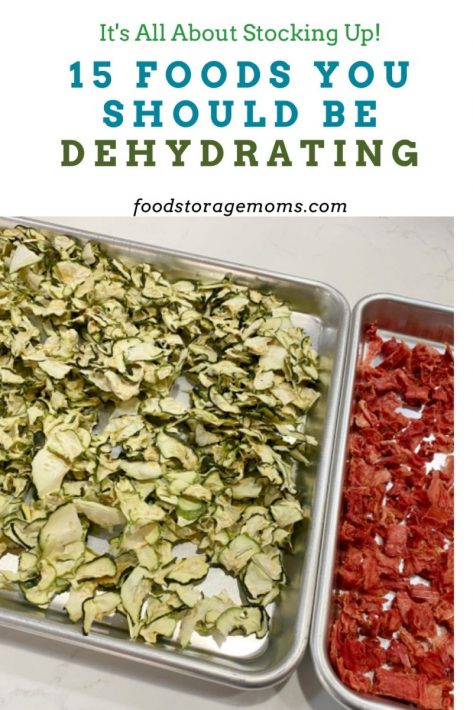
1. Bananas
Bananas are one of the best fruits to dehydrate. When you do so, you can prepare healthy banana chips, a sweet and crunchy chip that genuinely tastes great. Not only are they delicious, but the banana chips are good for you. They’re an excellent source of vitamins, potassium, magnesium, and iron. So, if you want to make sure your bananas don’t go bad, dehydrate them! In case you missed this post, How To Dehydrate Bananas
2. Apples
When you dehydrate apples, they still keep their nutritional value, and yet they last much longer. Apple chips are the perfect alternative to traditional potato chips which often contain lots of oil, carbs, and unhealthy ingredients like salt. When you want to save your older apples, slice them into pieces, and dehydrate them before they have a chance to go bad. That way you can enjoy fresh fruit chips that provide fatty acids, vitamins, and antioxidants. In case you missed this post, How To Dehydrate Apples
3. Zucchini
Zucchini is one of my very favorite vegetables to dehydrate. You can slice them, or chop them and place them in your dehydrator. These are perfect to add to soups, eat as a snack, or add to salads. In case you missed this post, How To Dehydrate Zucchini-Sliced & Cubed This year our garden was very prolific when it comes to zucchinis, so we dehydrated a bunch, along with giving our neighbors zucchini they could enjoy.
We’ve made zucchini bread and muffins and given away a whole lot since we couldn’t eat them all. This week we decided to dehydrate what we picked the past few days. We literally filled my dehydrator. It will be great to have them available whenever we want a snack or an addition to our fresh salads this summer.
4. Tomatoes
Dried tomatoes are the perfect additions to salads, soups, and stews. Don’t let your tomatoes go bad! Slice them into thin pieces, pop them in the food dehydrator, and then wait for them to get as crispy as you’d like. You might even want to eat them as a healthy alternative to chips!
In case you missed this post, How To Dehydrate Tomatoes Just like our zucchini plants, our tomatoes did very well this year. We’ve been keeping our dehydrator unit super busy the past few weeks. We love having options for future meal preparations and our neighbors have loved having us share with them.
5. Ground Beef
You may have noticed that beef jerky isn’t cheap. Why buy it at the store when you can preserve beef at home by dehydrating it and turning it into beef jerky? It’s a great way to reduce waste and ensure that you have delicious, flavorful meat available whenever you want it, even when you’re on the go.
In case you missed this post, Making Hamburger Jerky I’ve noticed that ground beef, along with most all beef options, is more expensive these days. Who knows what the future holds cost-wise? Dehydrate some meat and hedge against a rise in prices!
Just make sure the meat has a 93% ground beef-to-fat ratio at a minimum to be safe. The 85% hamburger at some of the stores will not be safe to use because it has too much fat. Because it doesn’t have preservatives, please keep it in the refrigerator or freezer in some airtight containers.
6. Kale
Season the kale with some of your favorite spices before adding it to the food dehydrator to prepare healthy kale chips. These chips taste amazing on their own, but you might also want to use them in salads to give the salads more flavor. It all depends on what you like!
Kale is an excellent source of vitamins and minerals, so it’s good to have it available when you want to put it to use. In case you missed this post, How To Dehydrate Kale and Make Kale Chips
7. Lemons
In case you missed this post, Dehydrating Lemons And Make Lemon Powder We love to have lemons in our cold water drinks. It just makes it fresh and flavorful. It doesn’t take long for your dehydrated lemon chips to add flavor to drinks of all kinds. Give them a try.
8. Green Onions
In case you missed this post, How to Dehydrate Green Onions & Make Powder Green Onions are a super addition to so many recipes. We like them as a topping on salads, in soups, and mixed in with sandwich fixings like tuna. You may think they lose their flavor when dehydrated. You’ll be surprised how they spring back in shape and flavor when added to almost any liquid mixture like dips.
9. Cucumbers
In case you missed this post, How To Dehydrate Cucumbers and Make Powder I’m more of a fan of cucumbers than Mark. I’d put them on many of my meal options if they were available. That’s why we dehydrated a whole bunch this month. I’ll be enjoying cucumbers and their tart flavor all winter long.
10. Cherries
Fresh cherries last much longer after going through the dehydration process. You can still use them in smoothies, add them as toppings to milkshakes and ice cream, and eat them as fruit-flavored snacks. Dried cherries are better for you than candy, but they taste a lot like it! In case you missed this post, How To Dehydrate Cherries
11. Mango
Lower your cholesterol and keep your blood sugar at the perfect level with dehydrated mango slices. Once you’ve sliced or chopped the mango into pieces, dehydrate them and enjoy using them in all sorts of meal plans! Mango is an excellent source of antioxidants and vitamins.
Mango is refreshing, and tasty, and can leave you feeling full, ultimately another option when using healthy food to assist with weight loss. Dehydrated mango is an excellent alternative to candy! In case you missed this post, How To Dehydrate Mango
12. Frozen Vegetables
You can expect to drastically increase the shelf life of your frozen vegetables when you choose to dehydrate them. Once they’ve gone through the process, you can still cook with them, adding them to stews, rice, and other flavorful foods you’re preparing. We put dehydrated vegetables in our soups and stews most often.
And don’t forget you can use these for chicken pot pie recipes. They add so much flavor to all the recipes that include them. Plus, you aren’t using up your freezer space. How To Dehydrate Frozen Vegetables As your mom used to say, “Have you eaten your veggies today?”
13. Celery
You can dehydrate celery to keep it fresh. It extends the life of the celery, making it possible for you to avoid wasting them if you haven’t used them fast enough. Once dehydrated, it’s OK to use the celery in soups and other recipes that call for chopped celery! It’s best used in baked casseroles, soups, or stews.
14. Pineapple
Pineapple is by far my family’s favorite dehydrated fruit. My grandkids always ask when they visit if I have a jar available for snacking. Pineapple is one of the easiest fruits to dehydrate and they’re good for you too. How to Dehydrate Pineapple
15. Watermelon
I recently wrote a post about how to pick a sweet-tasting watermelon. We’ve been eating watermelon slices all week with our dinner. We decided to take the leftover watermelon pieces and dehydrate them. I was pleasantly surprised that they didn’t take as long as I initially thought they would.
Now we have watermelon we can add to ice cream and other treats all winter long. In case you missed this post, How to Tell If a Watermelon Is Sweet or this post, How To Dehydrate Watermelon
What are some other food items I should consider dehydrating?
The 15 items listed above are some of our favorites. As you might imagine, we’ve dehydrated a wide variety of both fruits and veggies. Here are others that make good options when you’re putting your food preservation and storage plans together:
- Broccoli
- Bell Peppers
- Carrots
- Corn
- Peaches
- Pears
- Green Beans
- Sweet Potatoes
Can I make other things in my dehydrator rather than so many kinds of chips?
Yes, you can. One of our favorite things when the kids were young is making fruit leather. It’s actually pretty simple. Take the fruit and put it in your blender or food processor and make a puree. Cover your dehydrator trays with parchment paper so the puree doesn’t seep through the tray. Spread the puree so it’s about 1/8 inch thick. Place the tray in the dehydrator and turn it on. My experience, depending on how pliable you want the fruit leather to be, is to run the dehydrator for about 6 hours. You should check the temp and time setting for your particular unit.
How do I store the dehydrated fruits and veggies once the dried food is ready?
You should always store dehydrated foods in airtight containers. It will protect the food from mold, bacteria, moisture, and other issues. I use my special attachment for my Food Saver so I can actually vacuum seal the mason jars I like to use. If you click the links for the instructions for each of the above items it should provide the information you need for successful results.
Final Word
If you’re not dehydrating these foods already, it’s a good time to start. Make use of that food dehydrator you have in your closet or out in the garage. It’s a great appliance to have when you’d like to reduce food waste and save more of your money. These are only some of the many ingredients you can add to your dehydrator and save to extend their shelf life.
Dehydrated foods are great since you can eat them later when they’re more than likely out of season, or more expensive. Plan ahead and put the machine and the resulting food options to use all year long. Let me know what foods you like to dehydrate, I’d love to hear from you, and so would my other readers. May God Bless this world, Linda

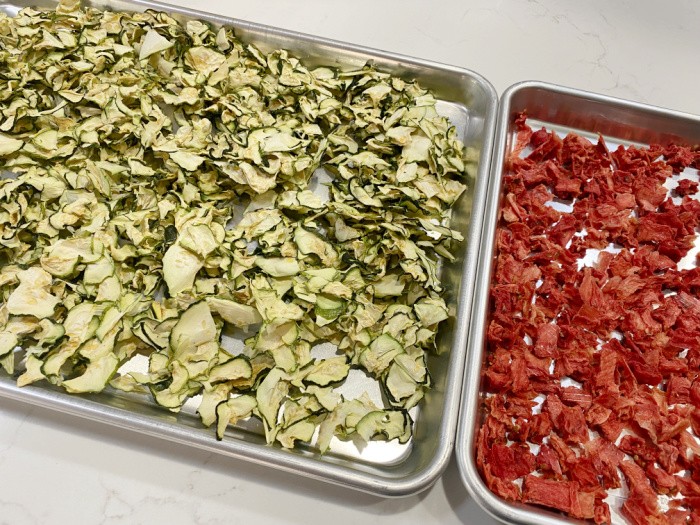

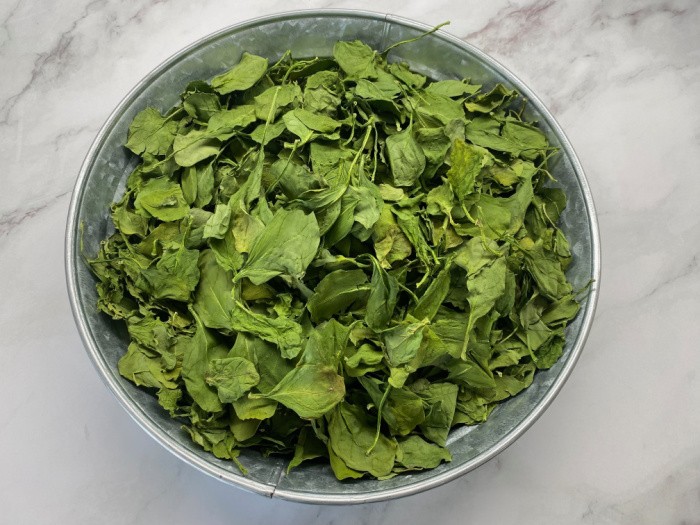
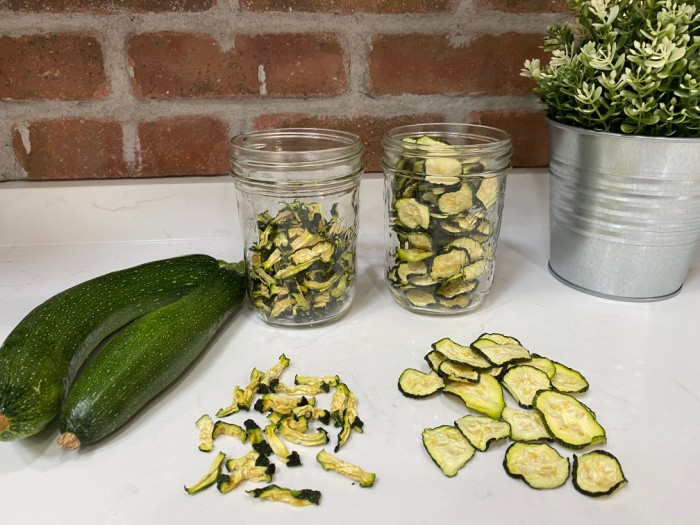
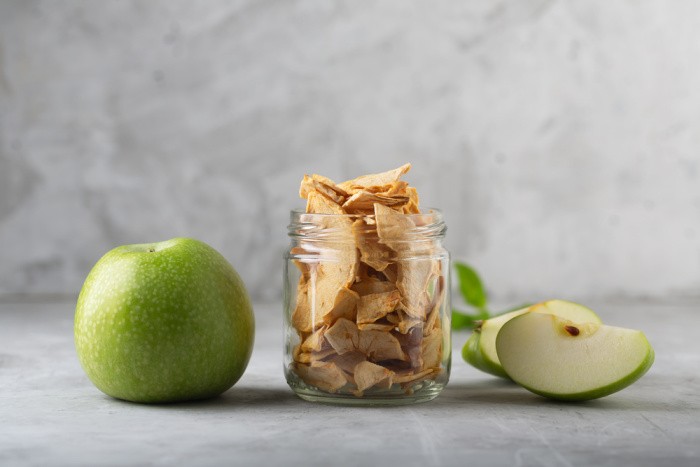

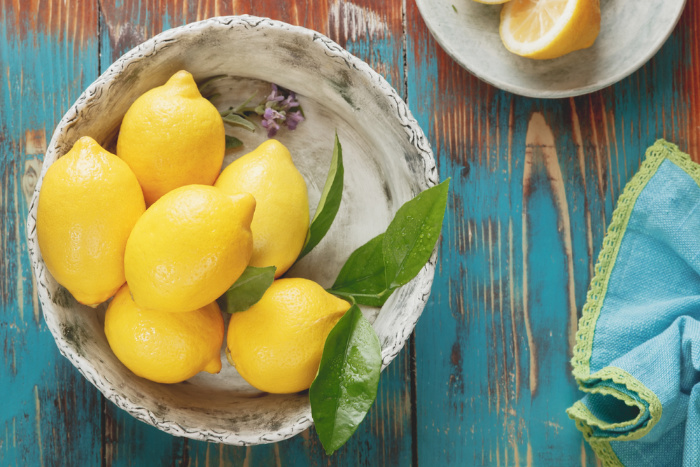
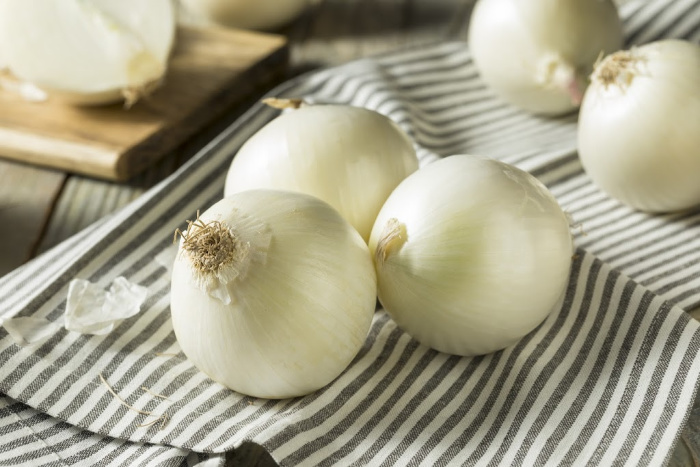
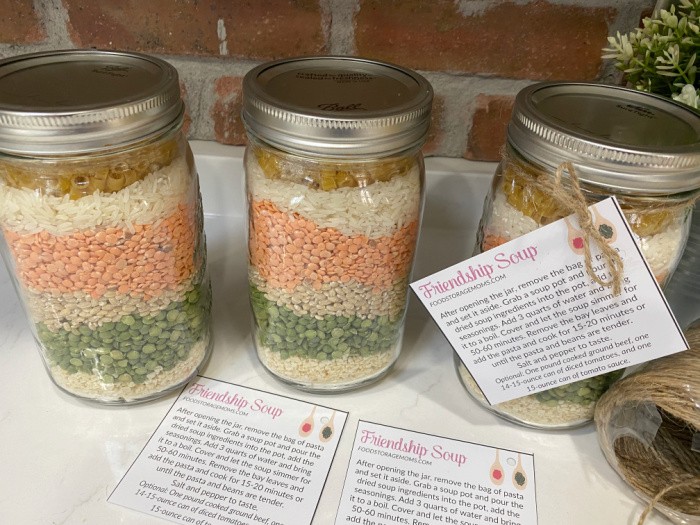
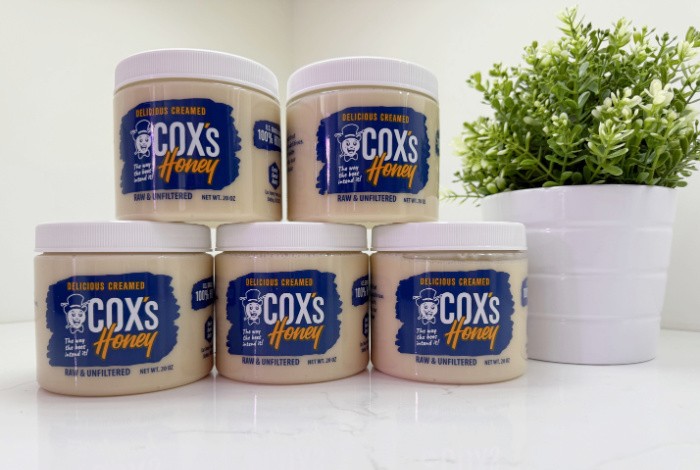
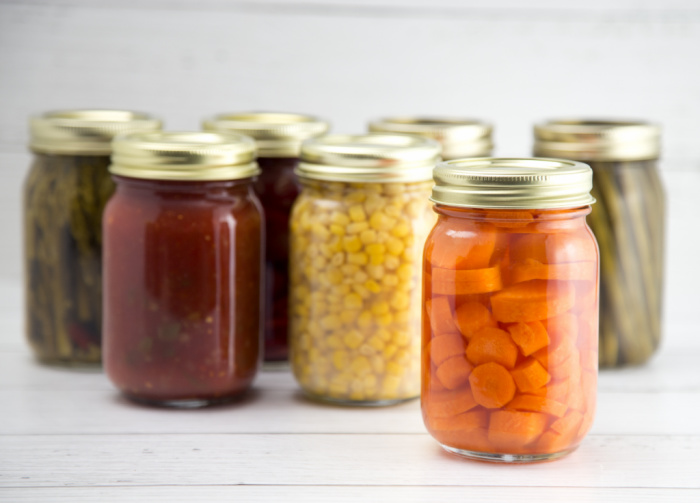



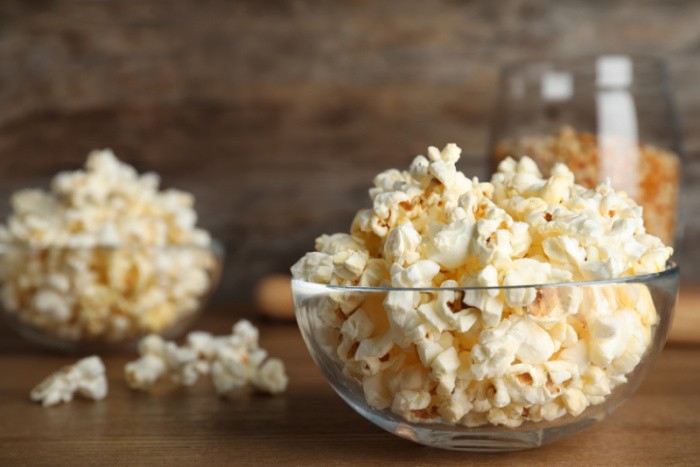
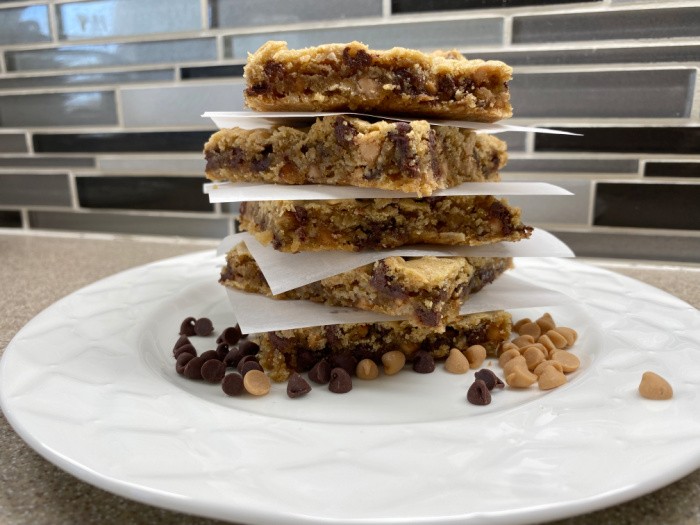
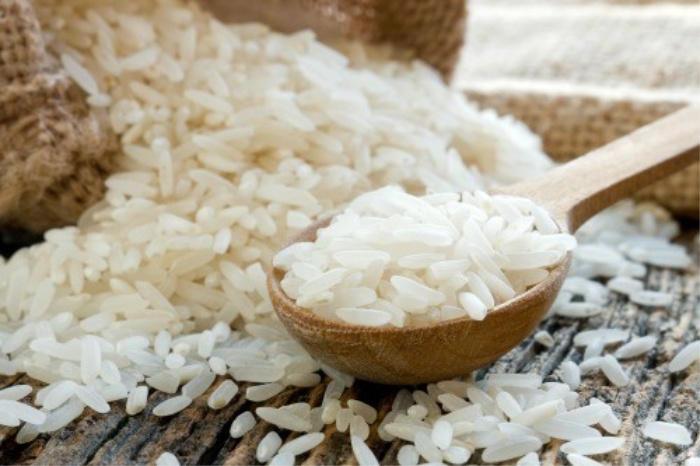
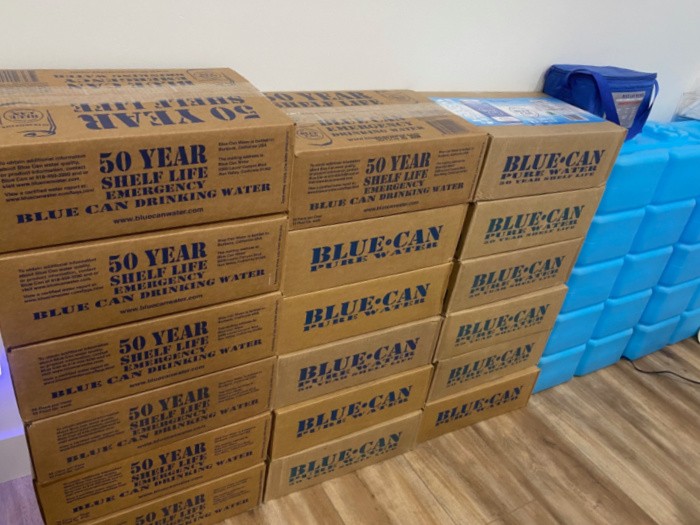
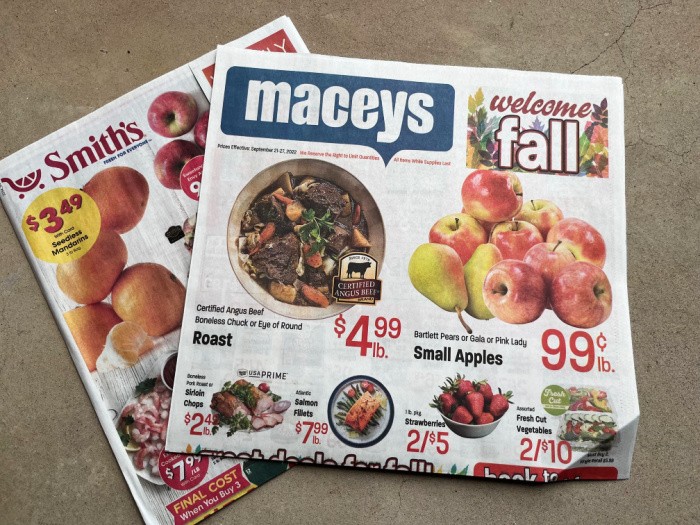
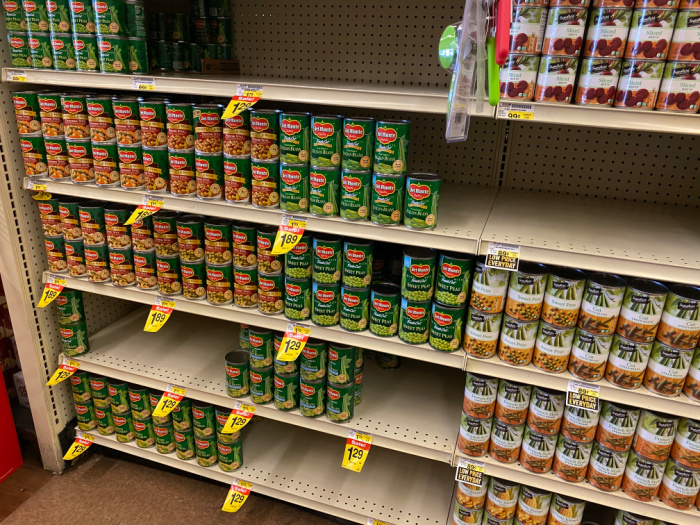

I’ve actually dehydrated a combination of onions, celery, and carrots (otherwise known as Mirepoix). Comes in very handy when you’re making soups!
Hi Kathie, that sounds great! I’m dehydrating sliced tomatoes today, and some frozen vegetables tomorrow. Your mixture sounds awesome! I put those in all my soups! Linda
This is one of the best lists I’ve seen. Thank you Linda. You are just too good to us. I have dehydrated tomatoes. They are really good to keep on hand. How do you store your dehydrated veggies?
Hi Deborah, I let them “condition” for at least a week after dehydrating and then put them in quart and pint wide mouth jars and use my FoodSaver. I only dehydrate what I can eat in a year. It’s mostly from my garden. Excess food is my second choice. The freezer needs to be my last resort. Linda
Few years ago was canning tomatos . I didnt want to wast the tomatoe skins so I thought I’ll dry them see how it comes out. To my surprise they were very good. Kids loved them as they called them Tomato chips. I also ended up with some tasty seasoning .
Hi Joakima, oh my gosh, what a great idea! Linda
I wish I’d thought to dry my tomato skins years ago when I had a huge garden. It always felt ‘wasteful’ when I’d have buckets of them during canning! (Although I did put them on an open compost pile I allowed my chickens to scratch in…). I did puree a batch once to add to my canned chili tomatoes. It made the chili bright red, just as dried tomatoes do!
I haven’t even gotten my dehydrator out this year. Since I am not growing anything on my deck, I would have to rely on purchasing things to dehydrate. I am being very careful this year on the amounts of things I buy. Perhaps this fall when I can get fresh apples, I’ll go to town on those.
In the past, I have dehydrated zucchini, sliced very thin and sprinkled with garlic powder (other powders would also work or a combo) and once dehydrated, they are really good for a substitute for potato chips.
Hi Leanne, zucchini chips sound great! I like them added to my soups, too. Apples are so good dehydrated!! Linda
Do you know if you can dehydrate “zoodles”? I am trying to follow a Keto diet and it would be great if I could make some of the things ahead, like the zoodles and cauliflower rice.
Hi Angela, I don’t know why you couldn’t. I would cut them into sections to make sure they dry evenly. I dehydrated zucchini bits and sliced zucchini. The zoodles would dehydrate unevenly but cutting them into sections should work. Linda
Linda,
This is an excellent list. I’m with you on dehydrating pineapple. I add it to my trail mix.
I’d suggest adding cranberries to the list as craisins are a favorite of mine–they go in the trail mix too.
Hi Ray, I have never dehydrated cranberries, I need to do that! I have several cans of freeze dried cranberries from Thrive Life. Great idea!! Linda
I have dehydrated pumpkin puree when I had a super abundance of pumpkin, didn’t want to can it and not a lot of freezer space to put it in. Turned out great. I then ground the pieces into a powder and have added a tablespoon or two to spaghetti sauce, chili and other dishes. to use 1/4 cup a powder to 1 cup of boiling water makes 1 cup of puree.
HI Janae, I love this idea! It’s not safe to can pumpkin puree, this is another option, I love it! Linda
My favorite dehydrated snack is pineapple. I buy the Del Monte Deluxe Gold – Pineapple Tidbits in 100% Pineapple Juice. I find the smaller pieces are easier to dehydrate and they are really tasty. This brand is my favorite for Pineapple in all different cuts.
HI Carol, you can’t go wrong with Del Monte, I need to do this, freeze dried pineapple is expensive. I have some but this would be so much cheaper and so much healthier! Yummy! Linda
I dehydrated a bunch of sourdough starter. Handy when sharing starter with people and also in case something goes wrong with your current batch you don’t have to start from scratch again.
Hi Alice, oh my gosh, I have never thought to do this, great tip for all of us! Linda
What temperature and for how long ? Please.
I used the lowest setting on my dehydrator for about 6 hours. It was spread pretty thin. You just break it up into chunks once dry and store in a jar in a cool dry place. It has to be absolutely bone dry or it will go moldy.
I don’t dehydrate food because no one ever told me about it. I would see them in stores but they were so expensive I never gave them a second look. It would be nice to have a dehydrator.
Right now though thanks to my husband I have a summer cold. When I am hot he is cold and when I am cold he is hot and he keeps the air conditioner up so high I have caught a a cold. Not good with Asthma.
HI Jackie, I’m sorry to hear you have a bad cold, darn!! They are not fun at all! Dehydrators are nice when you have a few items you don’t want to freeze and can see for instance the bananas may go bad. You can only make so much banana bread, right? LOL! You can slice and dehydrate them and you have some healthy snacks!! Linda